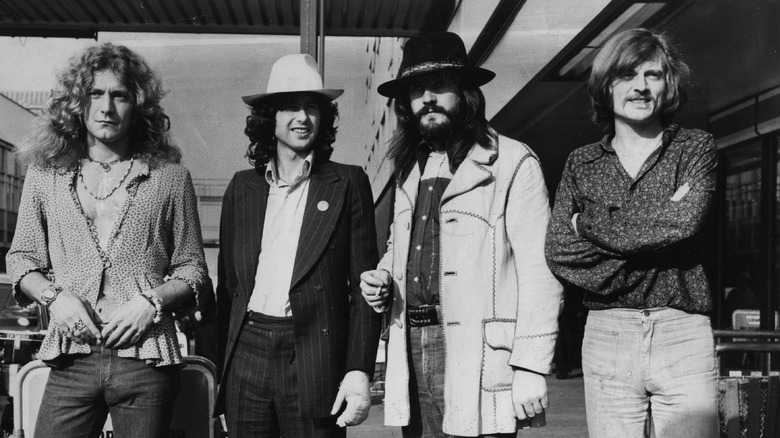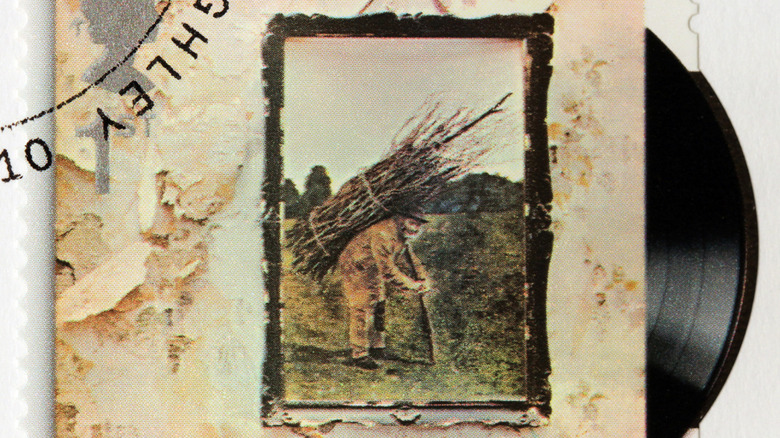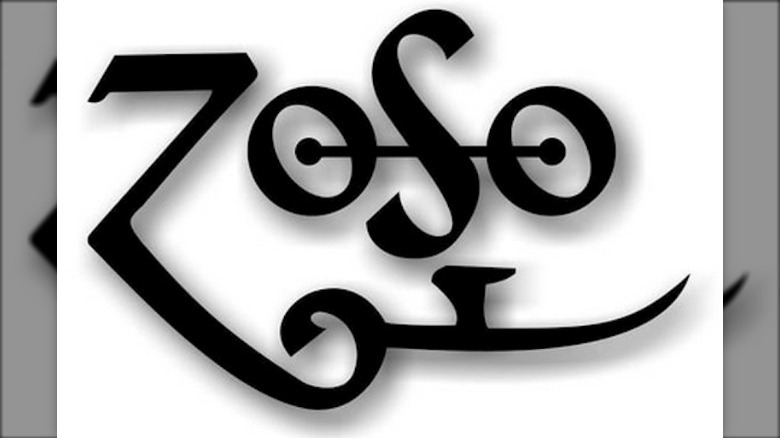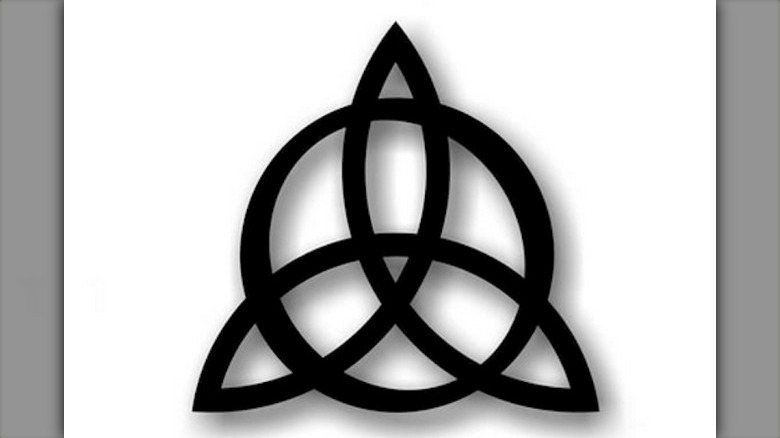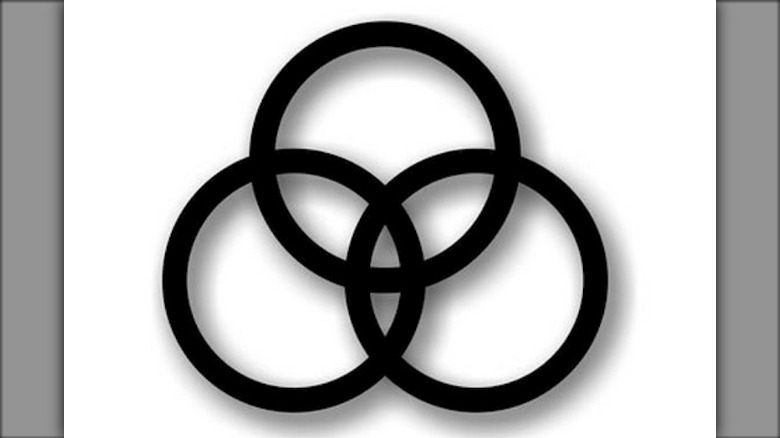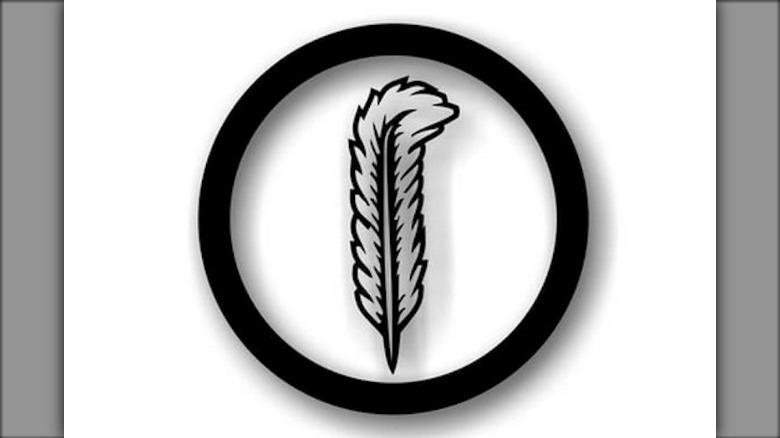Led Zeppelin's Four Symbols Had Origins In The Occult
Aside from the Beatles, legendary rock group Led Zeppelin might be the one group that is most associated with mystery and the occult. From messages supposedly hidden in songs played backward to the band selling their souls to the devil to Jimmy Page's association with occultist Aleister Crowley, the band is not without controversy.
Let's face it: controversy shrouded in mystique sells. It also doesn't hurt that the band was one of the top-selling acts of its time. Singer Robert Plant said in an interview with the Rock & Roll Hall of Fame that the band was "concerned with diversity, self-satisfaction, creativity," adding that they were only trying to entertain themselves first. Guitarist Jimmy Page told the publication that those who try to imitate the band miss the one thing that made them unique, and that is passion. Foo Fighters frontman Dave Grohl realized the value of their energy, writing in Rolling Stone that they were the "perfect combination of the most intense elements: passion and mystery and expertise."
The band intended Led Zeppelin IV to be different
The band's fourth album, known simply as "Led Zeppelin IV," was unique in that it had no reference to the band on it. Critics at the time believed that any album adorned with the band's name would sell millions of copies, regardless if it was good or not. So Page and the band decided there would be no distinguishing names or images on the fourth album to prove that they could indeed sell records based on talent and not hype.
The album would be one of their best-selling, and while it is arguably filled with some of the best rock of all time, it is steeped with mystery due not only to the old man on the cover but also because of the four symbols on the album's sleeve jacket. In an interview with Trouser Press, Page explained that each band member chose an anonymous symbol. The symbols — affiliated with the band ever since — represent the enigmatic essence of what we know as Led Zeppelin.
Jimmy Page
The first glyph on the album sleeve, chosen by Jimmy Page, is perhaps the most mysterious because even to this day, no one is exactly sure what this symbol means. At first glance, it looks like the word "ZoSo" spelled out with a bar running through the letters "oSo" while another bar extends from the bottom of what many people believe to be a "Z." According to Ultimate Classic Rock, singer Robert Plant said that Page told him what the symbol meant, but the singer has since forgotten what he said. This, of course, leaves the meaning up to plenty of speculation.
Curious fans with inquiring minds uncovered a symbol in the 1557 book, "Ars Magica Arteficii" by J. Cardan that supposedly represents the planet Saturn. This makes sense to some, as Page's astrological sign is Capricorn, which is ruled by Saturn, per Ultimate Classic Rock. However, in the book "Led Zeppelin: In Their Own Words," Page claims that it was unfortunate that people thought the symbol meant "ZoSo" because it was supposed to mean something "entirely different," but what, he did not elaborate.
John Paul Jones
The symbol bassist John Paul Jones chose for the album sleeve looks celtic in origin, which makes sense since it is a variation of the triquetra. The triquetra consists of three intersecting arcs. According to Symbols, the triquetra exists on European runestones and metal work. The symbol is also found on stained glass and in texts from the early Christian era because it represents the trinity.
Jones' symbol includes a circle that fits just inside the outer points of the triquetra. Symbols explains the circle represents God's love. That said, many religions and groups have used the symbol throughout the centuries. In fact, it is nearly impossible to trace the origin of the symbol because it is used in so many cultures. Extra Chill reports that Jones selected the symbol from Rudolf Koch's "Book of Signs," noting that it also appears on the cover of a Rosicrucian book. The site also suggests that the symbol represents confidence and competence.
John Bonham
John Bonham, who Rolling Stone named as the top drummer of all time in 2016, selected a symmetrical symbol that included three interlocking rings. Known as Borromean rings, these rings supposedly represent the trinity, according to the "Book of Signs." Extra Chill reports that Bonhm's symbol generated almost as much interest as Plants "ZoSo" symbol, with many believing that the tree circles represent man, woman, and child. Others think that the image might have appealed to Bonham because it looks like something of a set of drums from an aerial view.
Other theories involve Bonham's penchant for drinking. Plant allegedly pointed out that the three rings were on the label of Ballantine Beer. Another guess is that when Bonham drank, he would place bottles or glasses in such a way that they would form interlocking rings on the table (via Extra Chill). As with the meaning behind some of these symbols, we may simply never know.
Robert Plant
Robert Plant chose a more simple symbol — an upright feather with a bent tip inside the middle of a thick circle. Plant reportedly said in the book, "In Their Own Words," that he chose his symbol from the "sacred symbols of the ancient Mu civilization," which is supposedly associated with the people from the lost continent Atlantis (via Ultimate Classic Rock). The publication also points out that the feather is also associated with Ma'at, the Egyptian goddess of justice, truth, and balance. Sacred Texts also explains that the feather represents truth, and that Egyptians used the feather to represent truth, because the truth can easily be blown, or even frightened, away.
Extra Chill makes the point that since Plant wrote most of the lyrics for the band's songs, it would make sense that he would choose a feather, which was once used as a tool for writing. Britannica reports that using the quill for writing goes back to the sixth century, and that quills from a bird's left wing were preferred by the right-handed writer.
